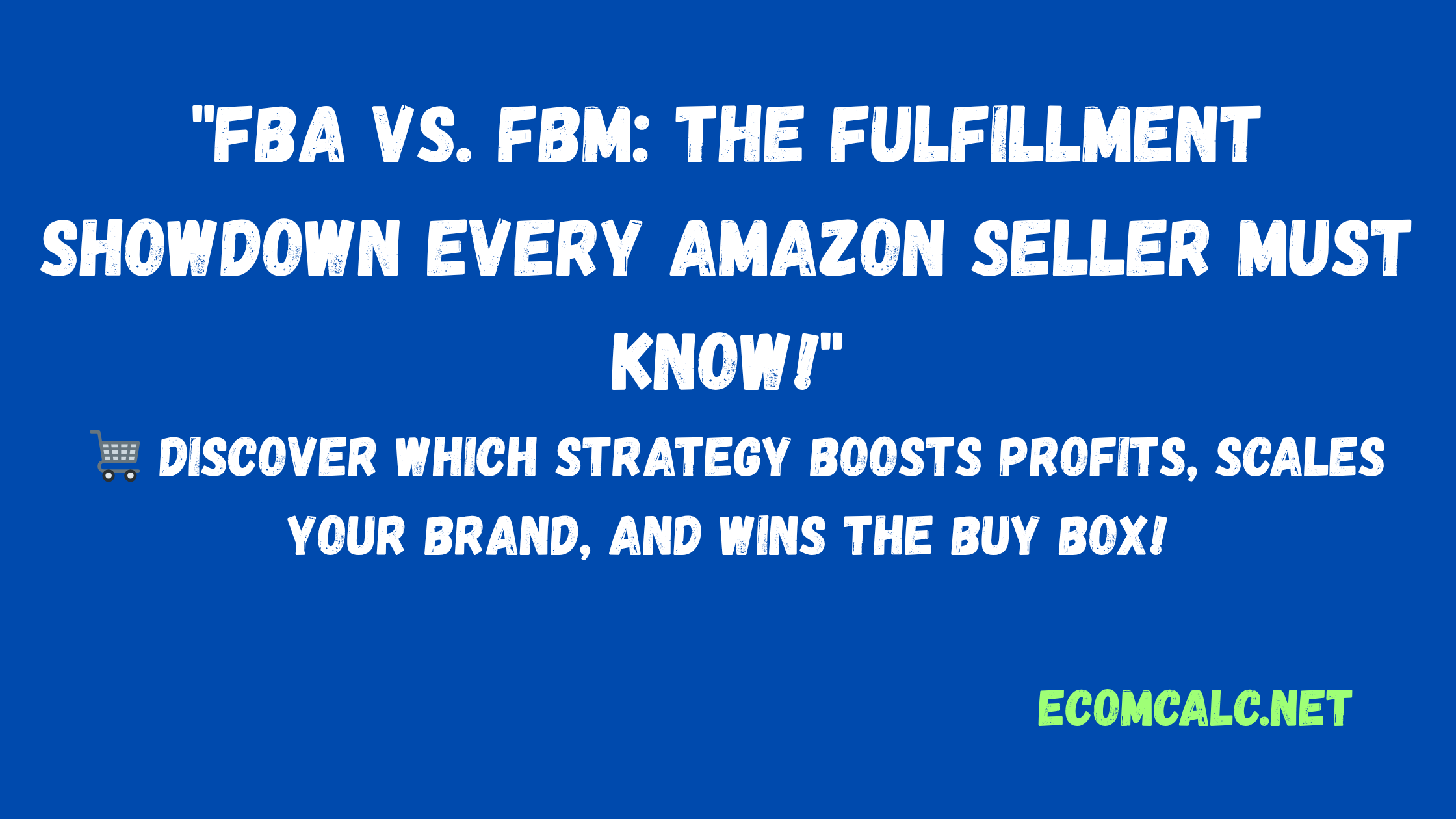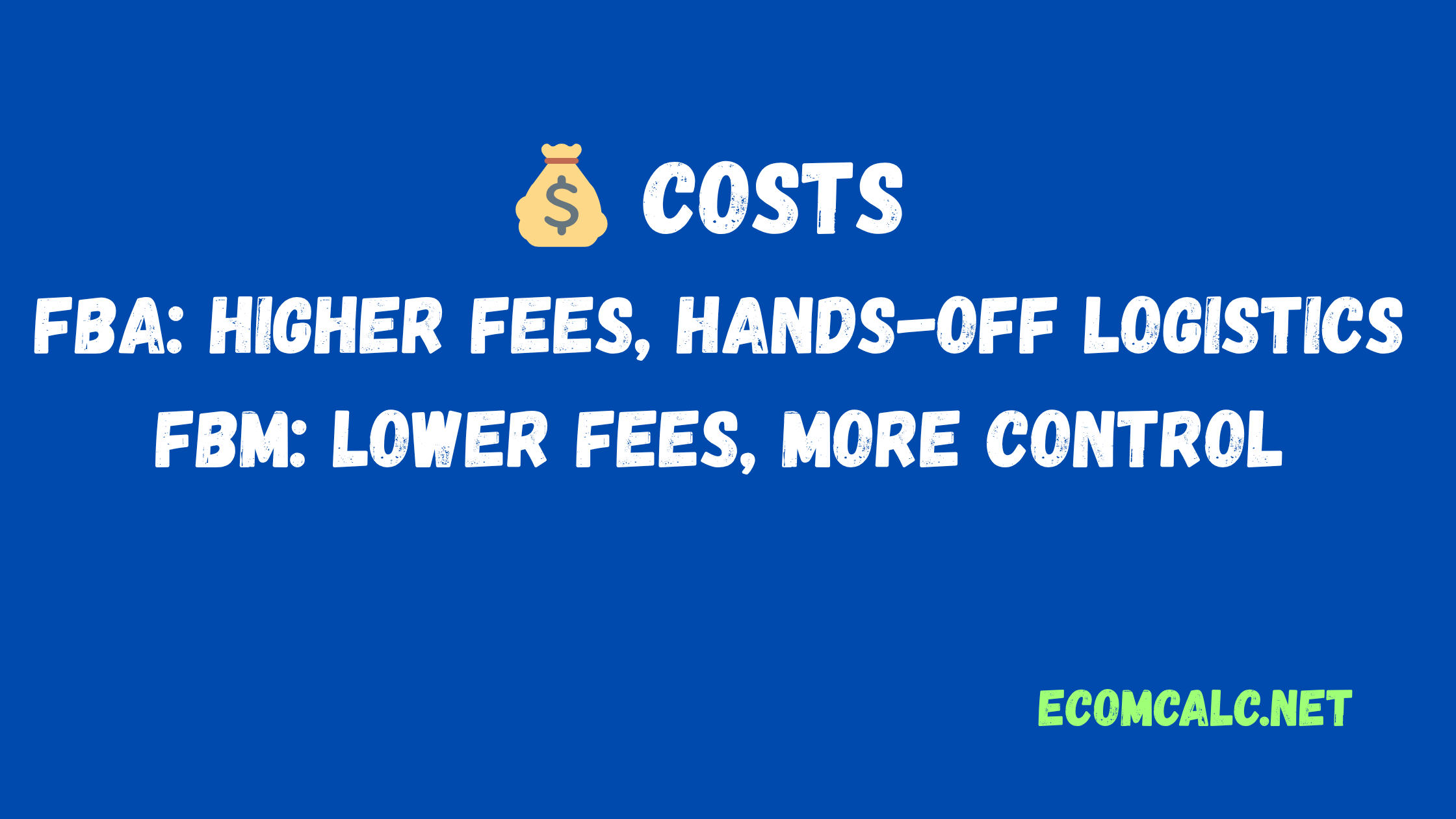Amazon FBA vs. FBM: Which Fulfillment Method is Better?
Published on May 5, 2023 | 8 min read
Amazon has transformed how the world shops and sells. For sellers, it offers an expansive marketplace—but success on Amazon depends heavily on your fulfillment strategy. Amazon provides two main fulfillment options: Fulfillment by Amazon (FBA) and Fulfillment by Merchant (FBM).
Choosing between FBA and FBM is more than just a logistics decision—it can define your brand experience, impact your profit margins, and determine how your products are perceived by millions of buyers.

What is Amazon FBA?
Fulfillment by Amazon (FBA) is a service where Amazon handles the heavy lifting for you. You send your inventory to Amazon’s warehouses, and they take care of storage, packing, shipping, customer service, and returns.
When a customer places an order, Amazon ships the product—fast, reliably, and with the trusted Prime badge.
What is Amazon FBM?
Fulfillment by Merchant (FBM) means you list your products on Amazon, but you handle storage, packaging, shipping, customer service, and returns. This gives you more control but also more responsibility.
FBA Pros: Why Sellers Love It
- Prime Badge = Higher Visibility
FBA products are eligible for Amazon Prime, leading to more traffic, higher conversion rates, and increased trust. FBA listings also win the Buy Box more often. - Hands-Off Logistics
You don’t need to worry about storage, packing, shipping, or customer service—Amazon handles it all. - Scalability
Whether you're selling 100 or 100,000 units, Amazon’s infrastructure supports your growth. - International Expansion
FBA makes it easier to sell globally using Amazon’s international warehouses.
FBA Cons: The Trade-Offs
- Higher Fees
Amazon charges for storage, fulfillment, returns, and more—these fees can add up quickly. - Limited Branding Control
Amazon controls the packaging, limiting your ability to create a unique customer experience. - Inventory Risk
Overstocking leads to storage fees; understocking leads to lost sales.

FBM Pros: Why Sellers Prefer It
- Lower Fulfillment Costs
FBM is cost-effective for low-volume or oversized items. - Branding Control
Customize your packaging and enhance the customer experience. - Better for Customized or Fragile Products
FBM gives flexibility for products requiring special handling. - No Storage Fees
Manage inventory on your own terms and avoid long-term Amazon storage costs.
FBM Cons: What to Watch Out For
- More Work
You’re responsible for logistics, customer service, and returns. - No Prime Badge (Unless SFP)
Unless enrolled in Seller Fulfilled Prime, your listings won’t carry the Prime badge. - Buy Box Challenges
FBM listings often need to be priced lower or have excellent metrics to win the Buy Box.
Cost Comparison: FBA vs. FBM
| Fee Type | Example Cost |
|---|---|
| Fulfillment Fee | $3.22 per item (under 1 lb) |
| Monthly Storage Fee | $0.87 per cubic ft (Jan–Sep) |
| Long-Term Storage | $6.90 per cubic ft or $0.15/unit |
| Removal Fee | $0.50–$0.60 per unit |
Costs vary depending on your process and may include:
- Shipping costs (e.g., USPS, UPS)
- Labor and handling
- Packaging materials
- Storage space
FBA is More Cost-Effective When:
- Product is lightweight
- Sells for over $15
- High sales volume
- You want a hands-off system

FBM is More Cost-Effective When:
- Product is heavy or oversized
- You already have efficient logistics
- Sales are seasonal or low volume
- Branding and custom packaging are priorities
Hybrid Approach: The Best of Both Worlds
Many successful sellers combine both FBA and FBM depending on the product type and strategy.
- Use FBA for: Fast-moving, small, standard-size items
- Use FBM for: Bulky, customized, or slower-moving products
Impact on the Buy Box
FBA listings often win the Buy Box because of Prime shipping and customer trust. However, FBM sellers with strong metrics and lower prices can still compete effectively.
Seller Profiles: Who Should Use What?
| Seller Type | Recommended Fulfillment |
|---|---|
| New Seller | FBA |
| Boutique Brand | FBM |
| High-Volume Seller | FBA |
| Handmade/Custom | FBM |
| Expanding Internationally | FBA |
| Oversized Items | FBM |
Helpful Tools to Decide
- Amazon FBA Revenue Calculator
- Helium 10
- Jungle Scout
- InventoryLab
- ShipStation
Final Thoughts: FBA or FBM?
There’s no one-size-fits-all answer. Your product type, resources, and goals determine the right path. Many sellers benefit from starting with FBA and evolving into a hybrid model.
- Do I want to manage shipping and returns myself?
- Is Prime eligibility important for my audience?
- What’s my profit margin after fulfillment costs?
- Do I want to control branding and packaging?
Whether you choose FBA, FBM, or both, the key is to stay informed, track your costs, and deliver a great customer experience. With the right strategy, your Amazon business can thrive in any niche.
Need Help Choosing?
Use our FBA vs. FBM calculator to analyze your product costs and determine which fulfillment model is most profitable for you.